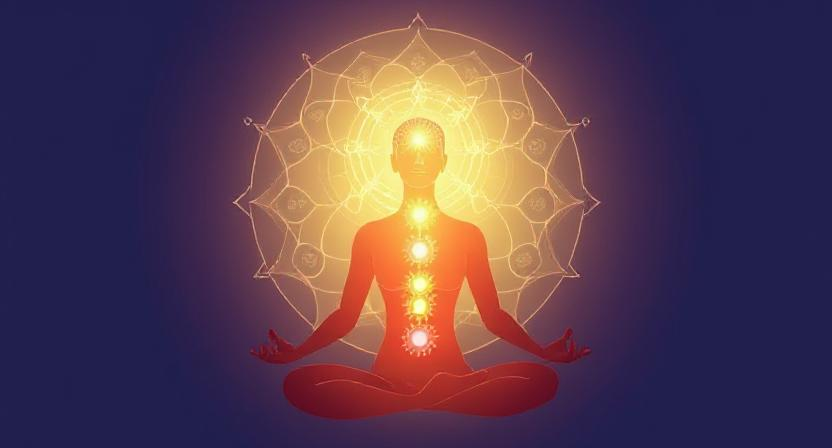
Unlocking the Power Within: The Mind-Body Connection for Meditation
In an age where stress is constant and distractions are everywhere, meditation has emerged as a sanctuary—a space for inner peace, self-awareness, and healing. At the heart of this transformative practice lies a profound concept: the mind-body connection. Understanding and cultivating this connection is key to deepening your meditation practice and unlocking its full potential.
Whether you’re just beginning or looking to enhance your current routine, the mind-body connection is the bridge that grounds your thoughts, emotions, and physical state into one harmonious flow.
Learn more about holistic wellness and mindfulness at Laybach.
What Is the Mind-Body Connection?
The mind-body connection refers to the intricate relationship between our thoughts, emotions, and physical health. It acknowledges that our mental state has a direct impact on our physical well-being—and vice versa.
This concept is not just philosophical but is backed by science. Studies have shown that stress, anxiety, and negative thought patterns can manifest as physical ailments, while relaxation, positive emotions, and mindful awareness can enhance immune function, reduce pain, and improve overall vitality.
Meditation leverages this connection, helping you align your inner world with your physical state.
The Role of the Mind-Body Connection in Meditation
1. Deepening Awareness
Through meditation, you cultivate interoception—the ability to sense internal signals like heartbeat, breath, and emotional responses. This strengthens your connection to your body and helps you stay grounded in the present moment.
2. Emotional Regulation
By observing your thoughts and bodily sensations during meditation, you become better equipped to recognize stress triggers and emotional responses. This awareness allows you to respond with calmness instead of reactivity.
3. Enhanced Relaxation Response
The mind-body link plays a crucial role in activating the parasympathetic nervous system, your body’s natural relaxation response. Practices like breathwork, body scanning, and mantra repetition send calming signals through the nervous system, reducing stress hormones and promoting healing.
4. Increased Physical Health
Consistent meditation, supported by a strong mind-body connection, has been linked to lower blood pressure, improved sleep, reduced inflammation, and better digestion. The body reflects the serenity of the mind.
Meditation Techniques That Strengthen the Mind-Body Connection
Here are some powerful meditation techniques to deepen the link between mind and body:
✨ Body Scan Meditation
A guided technique where you mentally scan your body from head to toe, observing sensations without judgment. This increases somatic awareness and reduces physical tension.
🌬️ Breath Awareness (Pranayama)
Conscious breathing anchors you in the present. Techniques like box breathing or alternate nostril breathing calm the mind and improve oxygen flow.
🔁 Mindful Movement
Practices like yoga, tai chi, and qi gong integrate physical motion with breath and mindfulness, making the mind-body connection tangible.
🧘 Loving-Kindness Meditation
By cultivating compassion and sending positive intentions to yourself and others, you engage both the heart and the mind, creating harmony throughout your being.
🕉️ Mantra Meditation
Chanting or mentally repeating a calming word or phrase aligns your mental focus with the vibrational rhythm of the body, encouraging a state of peace and coherence.
The Science Behind It
- Neuroplasticity: Regular meditation rewires the brain, enhancing areas related to focus, empathy, and emotional regulation.
- Vagus Nerve Stimulation: Breathwork and mindfulness activate the vagus nerve, which plays a critical role in regulating stress and digestion.
- Hormonal Balance: Meditation helps balance cortisol (the stress hormone), promoting better mood and energy levels.
These findings affirm that what we think and feel has a direct, measurable impact on our biology.
Creating Your Mind-Body Meditation Routine
To harness the full benefits of the mind-body connection:
- Create a Sacred Space
Choose a quiet area where you won’t be disturbed. Add elements like candles, calming music, or essential oils to support relaxation. - Set an Intention
Begin each session by setting a gentle intention—peace, clarity, healing, or self-love. - Stay Consistent
Even 10–15 minutes a day can create lasting change when practiced regularly. - Listen to Your Body
If you’re tired, rest in stillness. If you’re restless, try a walking meditation or yoga. Honor what your body is telling you. - Seek Resources and Guidance
Explore curated content and tools for meditation and wellness at Laybach.in—your partner on the path to holistic health.
The Mind-Body Connection: A Path to Wholeness
Meditation isn’t just a mental exercise—it’s a journey toward unity. When the mind and body work together, you become more resilient, balanced, and alive. You begin to experience yourself as a whole being, not separate parts. The mind-body connection is a reminder that healing, peace, and transformation are not outside of us—they arise from within.
“The body reflects the mind. The mind listens to the body. In meditation, they move in harmony.”
To deepen your exploration of meditation, mindfulness, and holistic wellness, visit Laybach.







